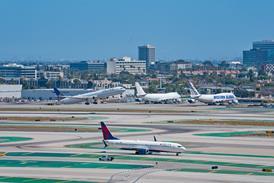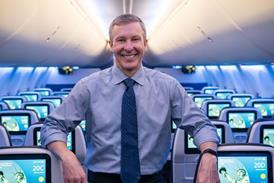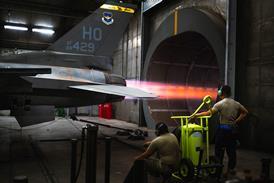Privately-owned Jet Airways is set to face much tougher competition
Chris Jasper/MUMBAI
Jet Airways has been the great Indian airline success story of the recent few years. The country's largest private carrier, Jet has grown rapidly, adding routes and aircraft at a rate that senior management at the much larger Air India and Indian Airlines can only dream about. But Jet's world may soon become markedly tougher, as the 'big two' cast off the shackles of state-sector control.
Executive director Saroj Datta believes, however, that Jet has enough weapons in its armoury to fight off the challenge. "Whenever the disinvestment is concluded it will still take a long time to bring Air India and Indian Airlines back into shape," he says. "They face literally hundreds of challenges, from investment and fleet to downsizing staff strength. So I still think it will take two or three years before the impact of the privatised companies is felt in the market."
A more immediate threat may come from planned start-ups such as Crown Express, Royal Airways and NorthStar Aviation, which Datta believes may become operational this year. "So we can't merely consolidate, but must expand sufficiently to go into the right number of routes." Jet is aided, Datta says, by "an aggressive sales network through Jet Air", and its investment in the Sabre computerised reservation system, offering a big advantage in terms of foreign revenues, which make up 28-29% of Jet sales. He also discounts the challenge of planned niche carriers, saying that only trunk routes into Delhi and Mumbai and north-south services pay in India.
Datta makes great play of Jet's efficiency as a privatised carrier. The airline has 6,000 staff, or 170 per aircraft (soon to become 163), compared with Indian Airlines, which he says has 23,000 staff or 500 per aircraft, and Air India, which he says has a 700-staff-per-aircraft ratio.
Datta rejects alternative statistics offered by Indian Airlines (Jet's main competitor) as failing to take into account its large number of international routes. Air India, for its part, says the aircraft-to-staff ratio is largely meaningless given that it has so far shunned outsourcing and consequently has large numbers of non-airline staff engaged in everything from transport to housekeeping and security.
Adds an Air India source: "Post-disinvestment, there could be spin-offs - of ramp-handling and ground services for example - and the laws are being changed to allow this. The removal of constraints in today's set-up will have a major impact."
Obstacles to overcome
Datta nevertheless maintains that shedding staff will be a major obstacle for Air India and Indian Airlines. "Their new owners may have the money to improve some things, and get new aircraft, but the main problem is the reduction of staff," he says. "And the really difficult thing will be to change the mindset of people who have been there for 20 years. So we have a lead-time in which to ensure that we retain and expand our market share, network and equipment."
One strategy being explored by Jet to outflank Indian Airlines is investment in large regional jets (RJs). Yet Datta cannot escape the suspicion that Jet might be better advised to consolidate around its current mix of Boeing 737s and ATR turboprops.
"The problem with RJs is the nature of the market in India and whether it can support them," he says. "They can bring lower operating costs, but the money spent buying them is high. And our turboprops have low fuel consumption and are not bad in terms of flight time." Because of this, Datta says, Jet's thinking centres on utilising regional jets to add frequencies on key trunk routes. "We could employ them on Delhi-Bombay at midday, for example," he says.
Jet is considering proposals by Bombardier, Embraer and Fairchild Dornier for new 70- or 90-seaters (offering lower break-even than 50-seaters), but says it has been offered unattractive delivery positions (from the first quarter of 2003 for two CRJ-700s to January and May 2004 for two ERJ170s, with CRJ-900s and Fairchild Dorniers falling somewhere in between). It is also struggling to find examples available for lease. Jet is happy with the ATRs that it has on long lease, and plans to add three more after building one route into a 737 service.
At Indian Airlines, Arora insists there are no plans to embrace the RJ revolution. "We discussed it and we decided it would not be economically viable," he says. "An expert committee went into it, but it was only ever examined in principle."
Jet meanwhile remains unfazed by an expected slowdown in market growth, from around5-6% at the close of the current (2000-2001) financial year to only 3-4% over the next few years. "We still think we can grow through the opening of new markets," Datta says. Capital for expansion may come from sources including an initial public offering, a $15 million debt offering, and the sale and lease back of Jet's 737-400s - or their sale and the purchase of Next Generation 737s.
| JET AIRWAYS: FLEET | |
| Boeing 737-700/-800 | 14 |
| Boeing 737-400 | 10 |
| ATR 72-500 | 5 |
| Requirements | |
| Boeing 737-800 | 10* |
| ATR 72 | 3* |
| Note: * ordered | |
Source: Flight International




















